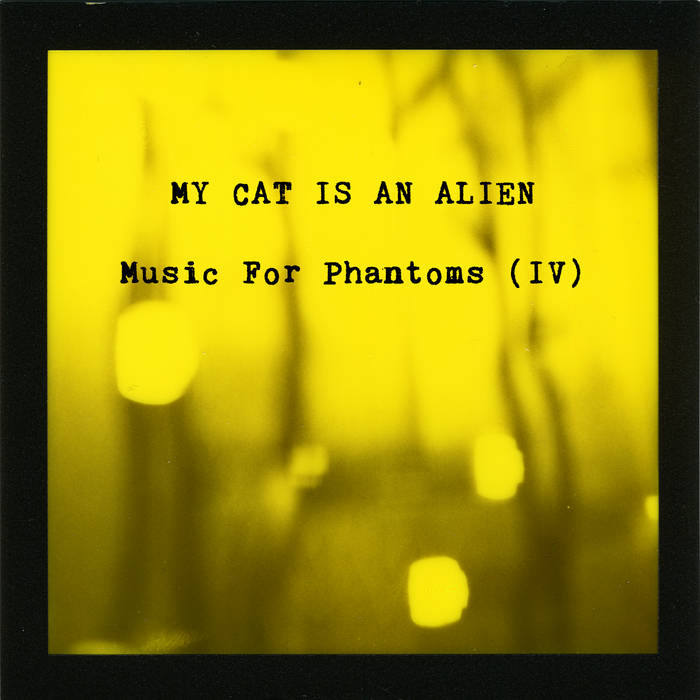
The Opalio brothers have been reliably surprising me with adventurous detours and evolutions for years, but this latest album is a creative leap into even more unexpected territory than usual. In some ways, that can be attributed to the unusually sparse gear involved (two glockenspiels and a single condenser microphone), which makes it quite a bit easier on the ears than usual for the dissonance-averse. In fact, I would not even have immediately guessed that this was an MCIAA album if I had first heard it while blindfolded. On a deeper level, however, this may very well be one of the duo's defining statements (and a sneakily brilliant one at that). The Opalios long ago cast aside earthly melodies, harmonies, and instruments in their journey into the furthest regions of the atonal, psychedelic cosmos, so I would be hard pressed to think of something even more outré for the next phase. As it turns out, however, I would have been asking the wrong question altogether, as the Opalios nimbly sidestepped that stylistic challenge and opted for something far cooler than another intensification of their characteristic otherworldliness: they dissolved into pure light (musically, at least). Put in their own words, this album represents "the blinding darkness coming from a dying flame and a new light not yet discernible on an increasingly undefined horizon." Given how rampant dying flames and undefined horizons are these days, Music for Phantoms (IV) feels uncannily tapped into the earthly zeitgeist (particularly for a duo who frequently seem to exist in an alternate dimension).
In characteristically colorful fashion, the Opalios describe the genesis of Music for Phantoms (IV) thusly: "recorded in the middle of the night...in the Western Alps with only 2 glockenspiels, wordless vocals and a single condenser microphone to capture the essence of the screaming silence." Naturally, the cover art thematically complements that vision, as it comes from a Polaroid that abstractly captured a light installation that the brothers dragged through the snow at night (few artists are as tirelessly committed to finding and creating otherworldly beauty, magic, and poetry as the Opalio brothers). While nearly everything about this album feels fresh, inventive, and heartfelt, it is nominally a continuation of a side project that began in 2007 and last surfaced a decade ago. Notably, this album is a radically different animal than the first three installments in both tone and instrumentation, but it does share the series' exclusive commitment to acoustic sounds. Even acoustic sounds can be very weird in the hands of the Opalios, however, as evidenced by the first two minutes of the opening "Traces of Shooting Stars" (it calls to mind a bunch of marbles dropped on a metal platter). That is admittedly an enigmatic and curious way to kick off an album this tenderly beautiful, but absolutely everything that follows is quietly and mesmerizingly sublime.
Given the album's hyper-minimal instrumentation, its three pieces all feel roughly cut from the same cloth, but they each have their own distinctive character. In "traces of shooting stars," for example, it sounds like an enchanted music box has become untethered from the rigidity of time signatures and drifted into a reverie of dreamlike, gossamer melody. The following "ocean of iridescent silence," on the other hand, takes a more shimmering and rippling approach, as the endlessly sweeping glockenspiel runs leave a quivering haze of celestial bliss in their wake. The closing "estranging analog morphologies" initially feels quite similar (sweeping cascades of notes leave behind a blurred and beautiful vapor trail), but it steadily becomes more structured and percussive before unexpectedly dissolving into a quietly lovely and hymn-like final act. It was a genuine surprise to hear Roberto's voice used in such a naked and melodic way. I am reluctant to use the word "ambient" to describe the overall feel of Music for Phantoms (IV), as it is constructed from Coltrane-esque sheets of sound, but it does evoke a pleasant state of suspended animation and strong sense of place: this album makes me feel like I have just stepped out of my remote mountain cabin to take in a gorgeously hallucinatory canopy of swirling and shimmering stars. I cannot think of any other album that successfully casts a similar spell and it is quite a lovely and immersive place to linger, so Music for Phantoms (IV) will probably connect with a hell of a lot more people than My Cat is an Alien's more characteristically challenging vision. It certainly deserves to reach a lot of new ears, as it feel like one of the strongest and most focused albums of the Opalios' career.
Samples can be found here.
Read More

